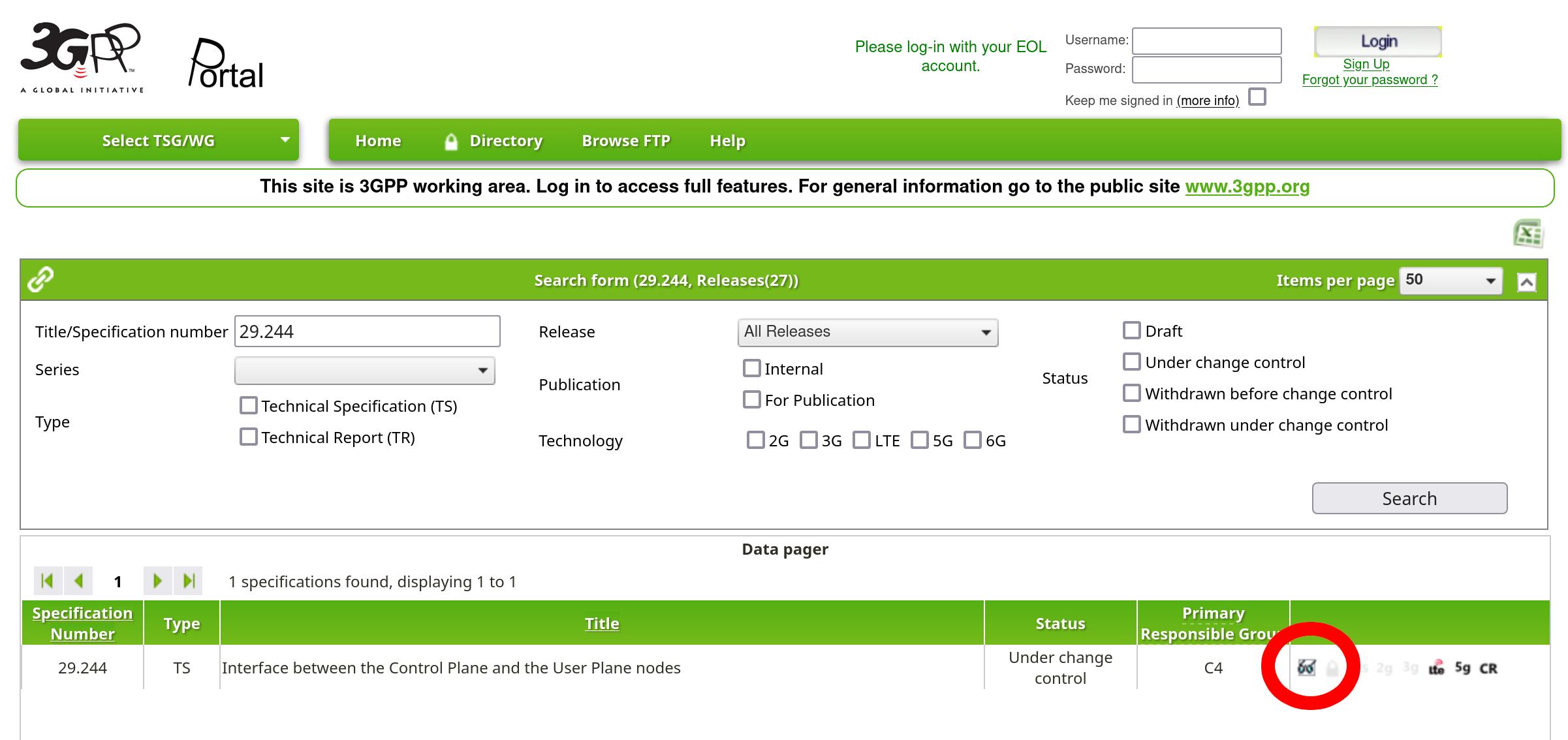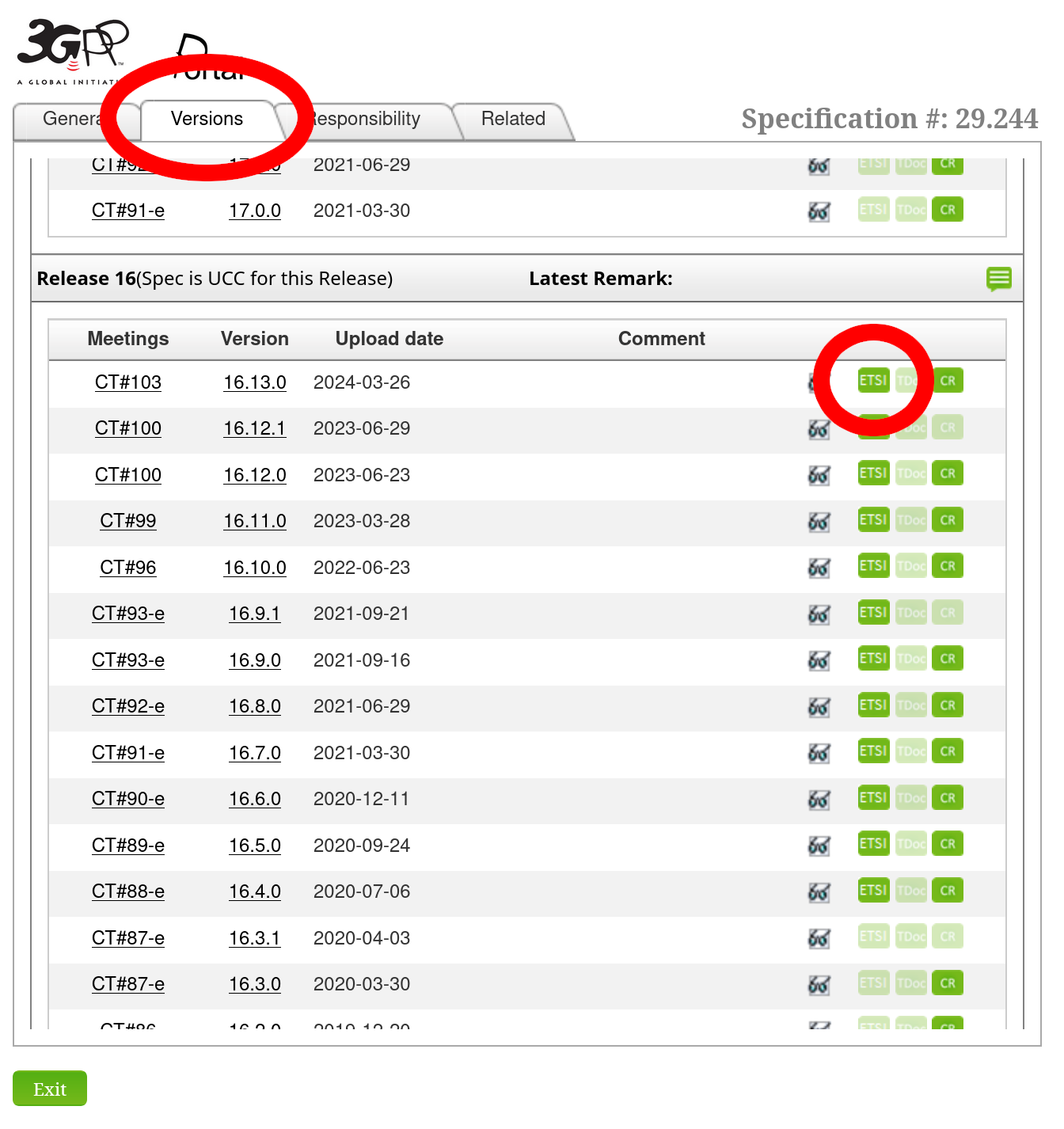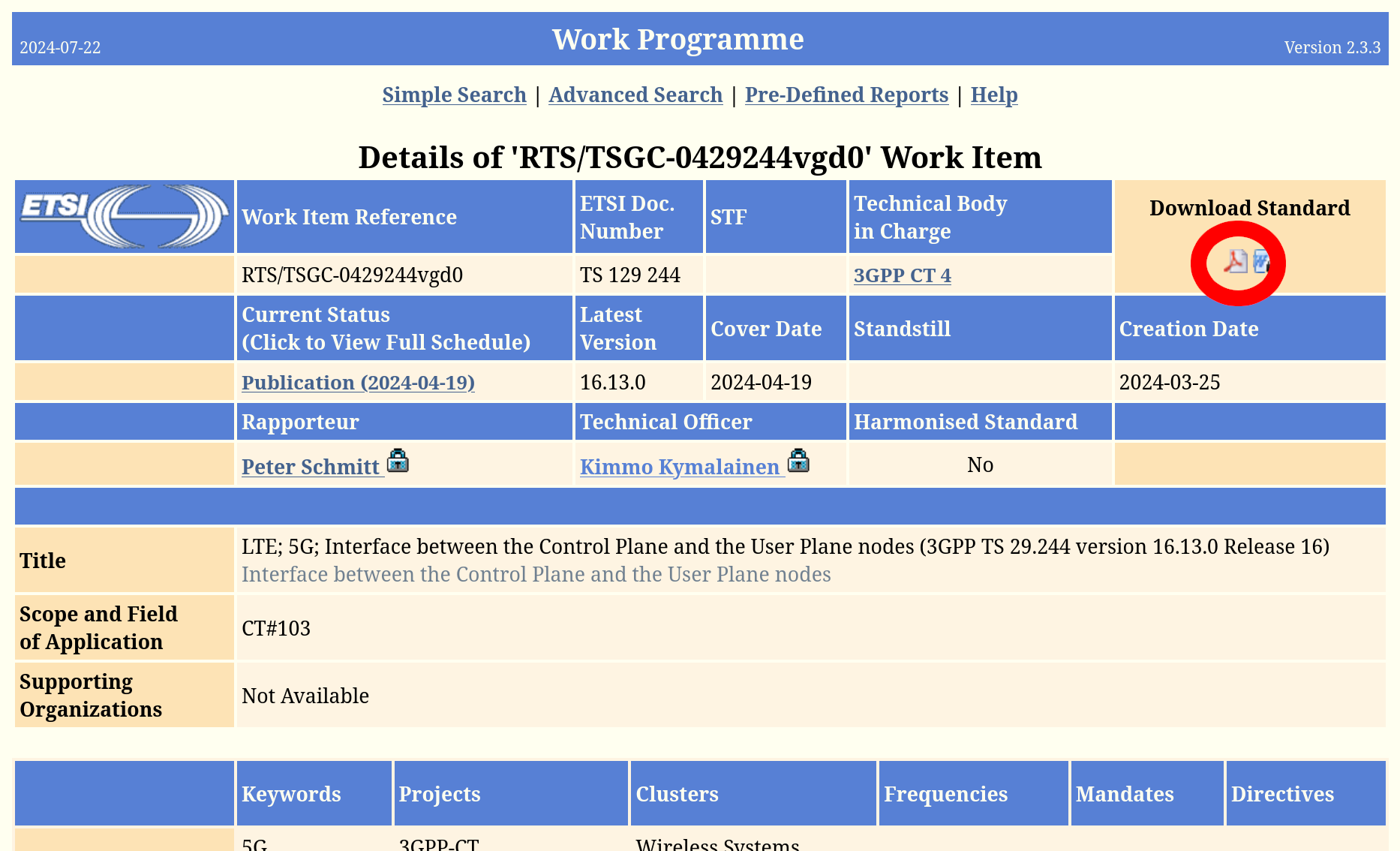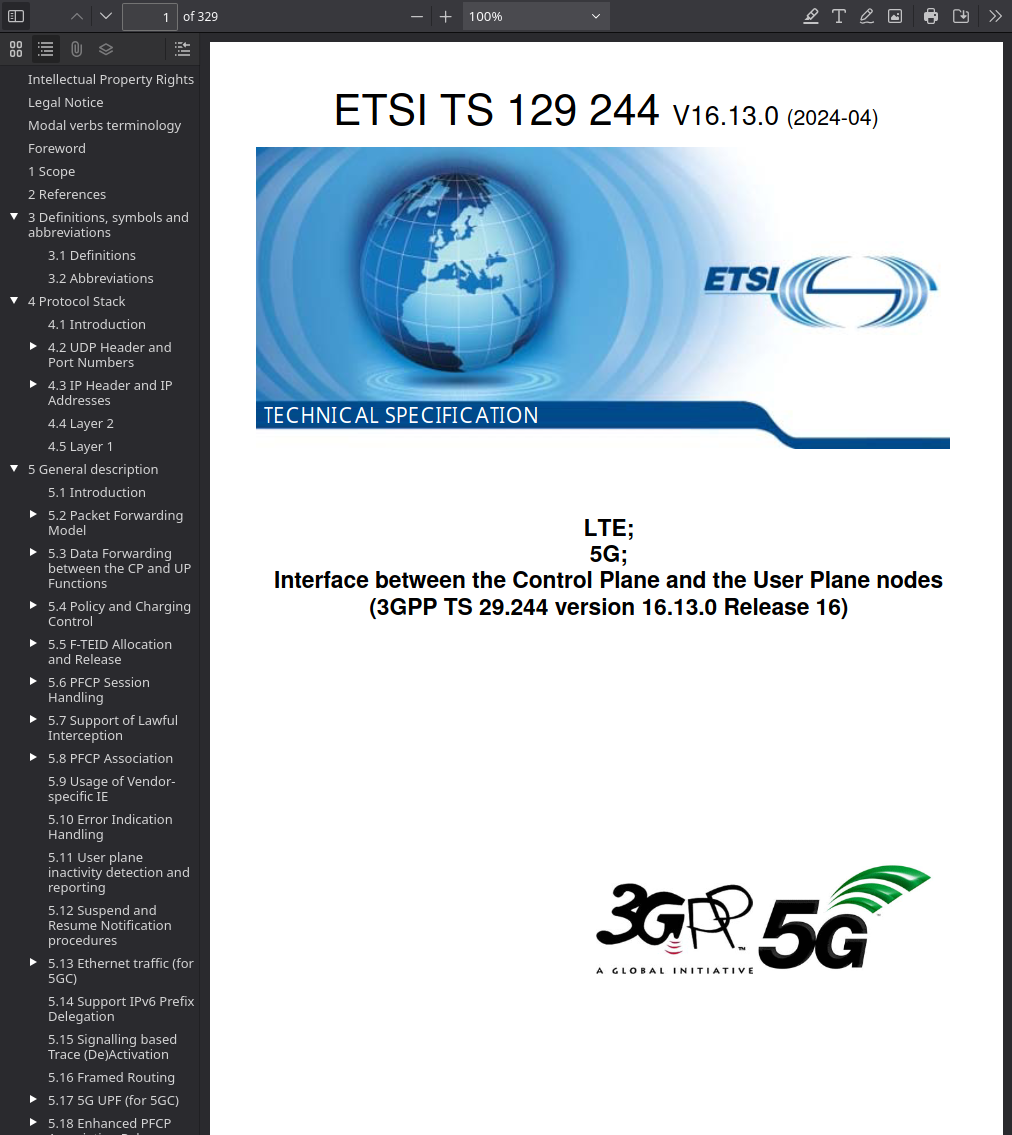Getting 3GPP Specifications
Presently, the specifications for mobile telecom (i.e. 4G LTE, 5G, etc.) are developed and freely published by groups working within the 3GPP (3rd Generation Partnership Project). The 3GPP is sort of analogous to the IETF (Internet Engineering Task Force), the organization tasked with developing and promulgating internet standards.
As a newbie in the telecom world (and the internet world too, to be clear), I find the 3GPP's specifications challenging to locate and comprehend so I've written some notes that are hopefully useful to myself in the future as well as others.
Getting Specification PDFs
When you already know which specification you're looking for, head over to the 3GPP specification search portal and enter the title or specification number in the search box.
Getting from the results page to a copy of the spec is not straightforward.
First, click the little glasses-on-a-sheet-of-paper icon on the right side (circled in red in the screenshot).

Clicking the glasses icon opens a new window where you must choose the version of the specification you're interested in. Select the Versions tab and then click the green ETSI button to the right of the version you're interested in.

Yet another window will open, this one titled "Work Programme". Click the icon circled in red under the Download Standard heading to download a PDF of the specification (the button on the right downloads a Word document, but I don't recommend it because the Word files are huge and slow to navigate compared to the PDFs).

Finally, you'll have your specification PDF. That was a lot of work so you might want to save it to avoid repeating the process.

Tips for Finding the Right Specification
Figuring out which specification contains the information you need is a bit more challenging. A good approach might involve reading Wikipedia or other summaries and following their citations.
Series Organization
The 3GPP organizes specifications into different series which are identified by the first number the dot in the specification's name. For example, TS 29.244 is part of series 29. Sometimes the document name includes a leading 1, eg. TS 129.244. I haven't found an explanation as to why. Drop the leading 1, if present.
These notes are mostly about the technical specification (TS) documents, not the technical report (TR) documents. This is because I haven't read any TR documents yet.
Note: Series numbers < 21 are only about pre-LTE GSM 2G stuff, so you can ignore them if that's not relevant.
I am nowhere close to being an expert on the different series, but here are my feelings on a few:
- Series 21, Requirements: These are lists of other specifications relating to a given topic. Essentially, they are an index that is the jumping off point into the specifications you'll need. For example, 21.201 lists all the specifications necessary for the Evolved Packet System (EPS).
- Series 22, Service Aspects: Very high-level descriptions of what a mobile network should do from a user or service's perspective. These documents are often described as "stage 1" descriptions. Some of the contents seem pretty obvious if you've used a cell network before. I have not read any of these yet, probably to my detriment.
- Series 23, Technical Realization: These are described as "stage 2" documents and seem to focus on how a network should achieve the stuff outlined in series 22. Series 23 covers the messaging exchanged between different entities in the network ("procedures" in 3GPP jargon). These documents include diagrams showing the ordering of messages and can be really useful for understanding how things are supposed to work at a medium-high level. Out of the 23 series, I most often refer to TS 23.401 (E-UTRAN Access).
- Series 24, 29, Signaling Protocols: So-called "stage 3" descriptions. These are down-to-bits specifications for communications protocols. They answer the "how" and sometimes "what" but rarely "why" questions. Specs for GTPv2-C (TS 29.274) and PFCP (TS 29.244) live in series 29 which covers internal network signaling. I haven't ready any specs in series 24, which covers UE-network signaling (I mostly work on core network stuff). These documents explain the semantics of a protocol and define its messages. The protocols defined here are mentioned in the series 23 specifications. Be careful because the series 23 terms describing the contents of a given message type can occasionally differ slightly.
- Series 36, LTE Radio Aspects: I don't refer to these often, as I don't work on the radio part. I've skimmed parts of TS 36.300 (E-UTRAN Overall Description) a couple of times.
Pro-Tips
- When learning a new specification it's often easiest to start by reading an early (in many cases for LTE, this is release 8) version of the specification. Earlier versions have less extra distracting fluff.
- These specs can be really, really dense and require a lot of context from other specs to comprehend. I've found that it sometimes takes months to understand parts of a spec. It is hard, but keep at it. Don't be afraid to put the spec down and come back later if something doesn't make sense.
- Keep notes in the margins of the document explaining difficult parts of the spec or summarizing walls of text. You'll be happy you did when you have to come back to these parts.
- First, cross-out the parts of the spec that do not apply to your situation, if applicable. This will save tremendous time in aggregate as you can quickly skip over irrelevant parts each time you refer to the spec.
- Russell DeLong has posted some great lectures of LTE concepts on his YouTube channel. I recommend watching them as an introduction to any of the topics they cover.